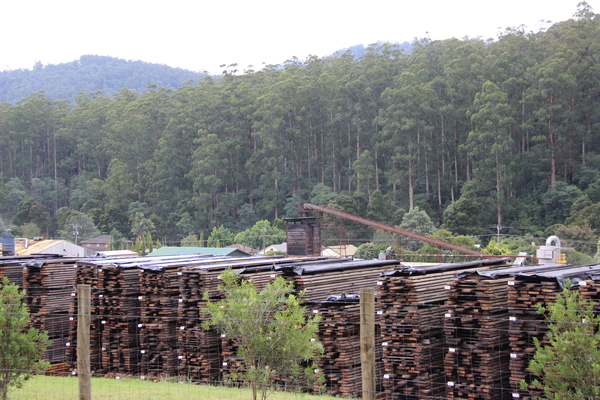By Kath Gannaway
The group of six saw millers known as ‘the G6’ have put forward a proposal to transition to plantation timber.
In an open letter to premier Daniel Andrews on 21 August, the group say the Bridging the Gap plan will secure the future of the state’s timber industry and end the uncertainty they have been campaigning against for the six months.
The plan seeks to remove Victoria’s reliance on native forests by transitioning to plantation timber supply by 2040 and immediately abolish clear-fell logging of native forests coups larger than 20 hectares.
The plan has come out of what the group says is uncertainty following the government’s purchase of the Heyfield sawmill in 2017 which they claim has had a devastating effect on timber supply to other sawmills.
The plan urges the Government to remove Victoria’s reliance on native forests by accelerating plantations as the primary source of timber supply.
“According to the Victorian Auditor-General’s Office, we have approximately 27,000 hectares of unproductive land which could be made available for timber plantations today,” a G6 spokesperson said.
“Just last year the government committed $110 million in funding for plantations in the Latrobe Valley. As yet nothing has eventuated. The Government needs to find suitable land for timber plantations and put seedlings in the ground.”
In an eight-point plan it calls on investment to enable better use of available resources and minimise waste and in state-owned plantations, revegetation of unproductive public and private land, legislation around Timber Supply Agreements, re-skilling assistance, exit packages, adoption of Forest Stewardship Council standards to improve the industry’s social license to operate, including a ban on the export of unprocessed saw-logs and measures around the industry’s role in bushfire areas.
Friends of Leadbeaters Possum president, Steve Meacher, cautiously welcomed the plan but said the true test would be in the detail.
“We welcome the recognition that there is a need to transition to plantations, but 2040 is far too far away,” he said.
“It is an urgent need not just from a conservation point of view but from the sustainability of the timber industry at all.
“If they carry on as they are, the timber supply that they rely on is going to run out long before 2040.”
Mr Meacher said the plan seems to ignore the fact that there are plantations already in existence which if brought on line should supply adequate timber for most of what the industry is wanting much sooner than 2040.
“We need to look at a much shorter time line if we’re to support this as an industry, and if native forests are to survive,” he said.
The plan comes also as Greens spokesperson for forests, Senator Samantha Dunn, spoke in Parliament on 23 August calling for an end to the controversial Wood Pulp Agreement Act.
“For over 80 years this archaic piece of legislation has guaranteed Victoria’s forests are logged, woodchipped and turned into paper at the Maryvale Pulp Mill,” she said.
“With species on the brink of extinction, entire ecosystems heading toward collapse it’s time to take action.
“It’s time to end the destructive and damaging Wood Pulp Agreement Act.”
The G6 says also it’s time to start thinking about doing more with less, acknowledging that native timber is a diminishing resource.
“Small sawmills like those owned and operated by the ‘G6’ have an important role in providing jobs, supporting local communities and responsibly managing the future of our precious timber resources. That’s what the Plan is all about,” their spokesperson said.







